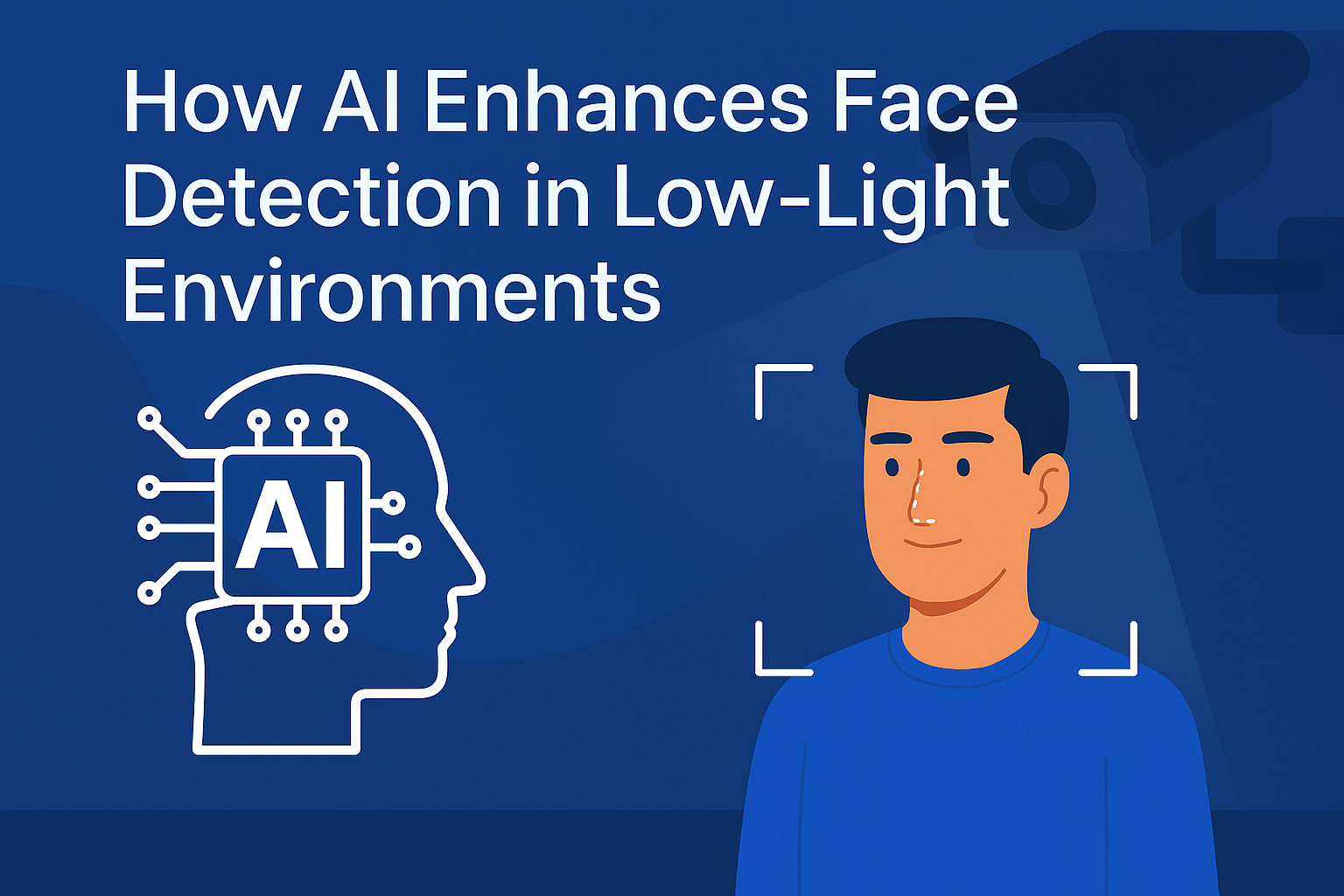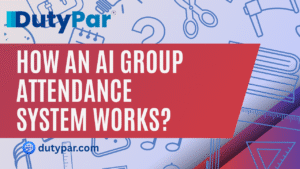
Table of contents
- Understanding the Challenge of Low-Light Conditions
- How AI Enhances Face Detection in Low-Light Environments
- Methods AI Uses to Improve Detection
- Real-World Impact of Enhanced Face Detection
- The Unique Benefits of AI-Enhanced Face Detection
- Challenges and Future Outlook
- Conclusion: Embrace the Future of Face Detection
In the digital age, security and efficiency are top priorities. Modern cameras and smart systems now take center stage in protecting our homes, offices, and public spaces. One breakthrough is in the field of face detection under low-light conditions. This article discusses how AI enhances face detection in low-light conditions. We highlight the difficulties associated with low-light environments and show how AI allows for these difficulties to be seen as opportunities.
Understanding the Challenge of Low-Light Conditions
Low-light situations create a lot of problems for face detection systems. Typical cameras usually have a tough time when there is little light. The low-light conditions create grainy images, poor contrast, and blurred features that make it hard to identify faces. These issues are not just about the technology; they affect how we secure our environments and the way we interact with our devices. When we have low-light conditions, even with great algorithms, we have challenges. Artificial Intelligence (AI) comes along and finds ways to solve these problems.
Some of the ways AI works is using known sophisticated algorithms and Deep Learning. This technology utilize all of the images taken at various conditions and better demonstrates the system’s ability to distinguish important features while in low-light situations. Therefore, people benefit from better-imaging and face detection.
How AI Enhances Face Detection in Low-Light Environments
AI in low-light face detection works by enhancing image quality before and during the detection process. Here’s how it makes a difference:

- Image Enhancement AI algorithms improve the brightness and contrast of images in real time. They reduce noise and sharpen details. This makes faces more visible in dark settings.
- Noise Reduction Grainy images, common in low-light, often confuse standard face detection systems. AI uses noise reduction techniques to clean up images. The end result is a clearer picture that supports accurate detection.
- Deep Learning and Feature Recognition Modern AI systems use deep learning models that mimic how humans recognize faces. These models are trained on millions of images. They learn to spot patterns and unique facial features even in poor lighting conditions.
- Adaptive Algorithms AI constantly adapts to changing light conditions. The software adjusts its settings in real time. This flexibility means that whether you are in a dim hallway or under a night sky, the system continues to work efficiently.
- Integration of Infrared and Thermal Data Some advanced systems combine visible light cameras with infrared or thermal imaging. AI merges these inputs, enhancing the detection of faces when visible light is limited.
Methods AI Uses to Improve Detection
AI in face detection relies on various methods to overcome the challenges of low-light environments. The following table summarizes the key techniques:
| Technique | Description | Benefit |
|---|---|---|
| Image Enhancement | Adjusts brightness and contrast while reducing graininess in real time. | Increased clarity in dark conditions. |
| Noise Reduction | Filters out grain and visual disturbances. | Smoother, cleaner images for accurate detection. |
| Deep Learning Models | Trains on large datasets to recognize facial features under various conditions. | Improved recognition accuracy. |
| Adaptive Algorithms | Changes settings based on light conditions automatically. | Consistent performance regardless of lighting. |
| Infrared/Thermal Integration | Combines multiple imaging technologies to support detection. | Enhanced reliability in very low-light scenarios. |
This table highlights how each AI-driven method contributes to making face detection more effective in low-light environments.
Real-World Impact of Enhanced Face Detection
Enhanced face detection technology has many practical benefits in our everyday lives. By using AI, security systems can work efficiently at night or in dimly lit areas. This technology is crucial for applications such as:
- Security Surveillance: Cameras at banks, airports, and retail stores now capture clear images at night. Forces are better equipped to monitor suspicious activities in low-light.
- Smartphones and Personal Devices: Many mobile devices use face detection for user authentication even in low-light. This helps unlock phones safely and quickly.
- Access Control Systems: AI-driven face detection helps secure entry points in offices and residential complexes. This ensures that only authorized individuals gain entry.
- Public Safety: Low-light conditions in public areas, such as parking lots and streets, are significantly improved. Enhanced face detection contributes to better law enforcement and public safety measures.
With these improvements, organizations and individuals can trust that their security systems will perform well, regardless of how dark the environment may be.
The Unique Benefits of AI-Enhanced Face Detection
The application of AI in low-light face detection brings forward several unique benefits:
Accuracy and Reliability
Face detection systems that use AI are much more accurate than traditional methods. They learn continuously from a flood of data. This learning translates into fewer errors. Even in difficult lighting, AI maintains a high level of precision.
Speed and Efficiency
AI processes data quickly. The enhancement of images happens in real time. This ensures that detection is nearly instantaneous. For security purposes and user authentication, speed is essential.
Cost-Effective Solutions
AI systems reduce the need for expensive hardware upgrades. Instead, software upgrades can make existing cameras more effective. This lowers overall costs while maintaining high security standards.
Scalability and Integration
As technology advances, AI solutions can be scaled easily. They integrate with other security features like motion detectors and alarm systems. This makes for a well-rounded approach to safety and user authentication.
Enhanced User Experience
For everyday users, enhanced face detection means fewer hassles. Whether it is unlocking a phone or accessing a secured building, the process is smooth and reliable. This simple yet powerful benefit increases trust in technology.
Challenges and Future Outlook
Although AI has greatly enhanced face detection, especially in low-light environments, it still faces challenges. Privacy and security of personal data are still a major concern. Organizations must ensure that the data collected is kept safe and secure. Furthermore, there are systems that learn continually and what must be done to adapt. Nevertheless, technology is always evolving, and there are ways to resolve these problems through better algorithms, stricter protocols, and newer careers in the industry.
Industry professionals anticipate that in the coming years, AI-enhanced security systems will be relevant. They will identify faces in poor lighting and be integrated, so seamlessly that you won’t even know you’re using them within smart cities or an automated system. The development of these technologies continues, and it will change the way we secure and interact with spaces.
Conclusion: Embrace the Future of Face Detection
How AI Enhances Face Detection in Low-Light Environments is more than a technical breakthrough—it is a step toward a safer, more efficient future. AI transforms grainy, low-light images into clear and accurate representations. It improves security, streamlines user authentication, and enhances overall public safety.
References





